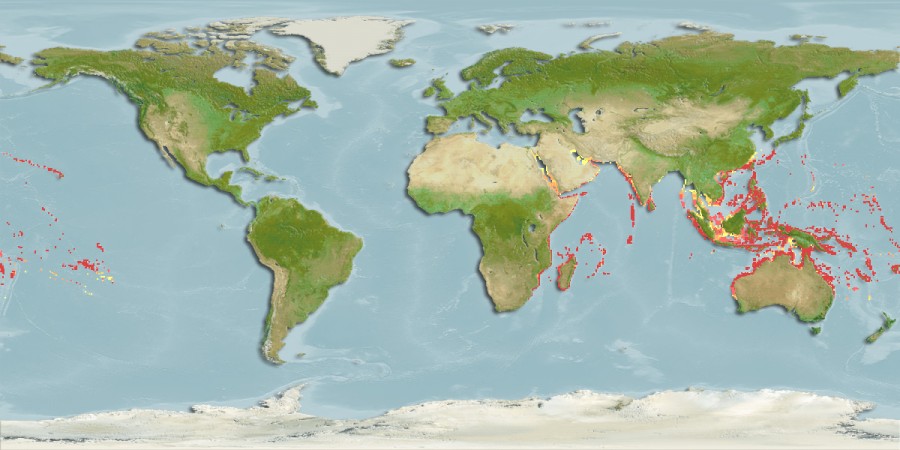Where should you worry about stepping on them?
Synanceia verrucosa are typically found in shallow warm waters, but the main concern with this fish is that it can actually survive on land for short periods of time. Thus, in warm marine areas, stonefish can actually beach themselves and make great targets for poisoning people enjoying a day at the beach. The “hotspot” for these fish is typically the Indo-Pacific area, but lately they have also been migrating into the Mediterranean Sea area. This migration causes dramatic changes to the ecosystem because it is basically a new predator introduced to the niche. There is more information about its food sources on the nutrition page. In general, the main habitat for the stonefish is shallow waters full of rubble, rocks, or sand and near reefs or large rock masses. Below is a map I created using the mapping software, c-mapper, at aquamaps.org. Red areas are the regions of highest concentrations of Synanceia verrucosa, and with the new found migratory patterns of the species, soon it might be possible to see more red dots appearing in the Mediterranean area as well.
It is quite easy to see that stonefish are very prominent on the eastern side of the world map along the Australian and Asian coasts. They also have high populations in the Red Sea and along the coasts of Africa and India. Because this fish lives amongst the rocks and rubble, it shares its niche with other bottom dwelling organisms such as rays, crustaceans, marine gastropods, shallow water sharks, and coral. Overall it is a secondary or tertiary consumer because other predators will not eat it due to its venom. The venom of the Synanceia verrucosa is quite important to its survival; which is described on the next adaptation page.
Back to home.
